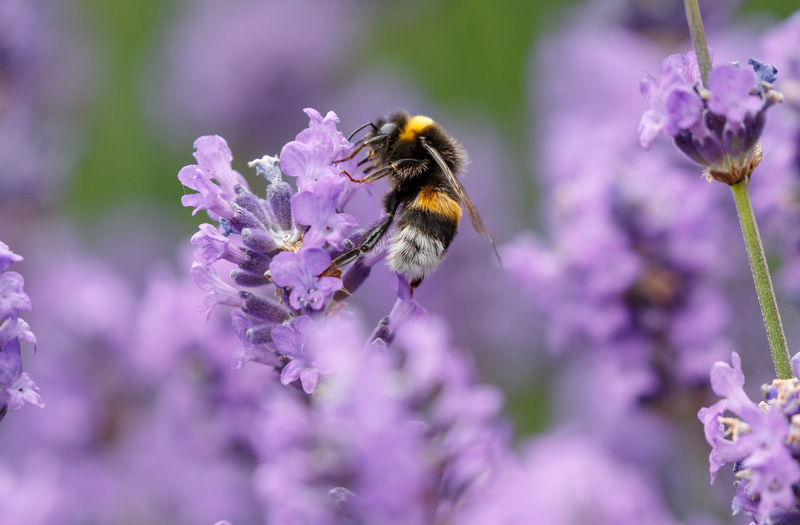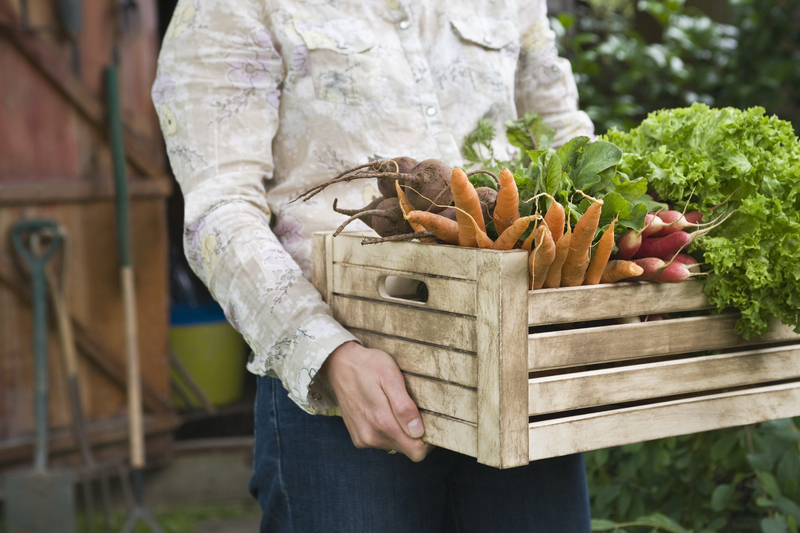Garden Design Tips for Child-Friendly Play Areas
Posted on 10/09/2025
Garden Design Tips for Child-Friendly Play Areas
Creating a garden space that is both beautiful and safe for children is a dream for many families. **Garden design tips for child-friendly play areas** allow you to transform your outdoor space into a stimulating, secure, and visually pleasing environment for your kids to play and grow. Whether you have a spacious backyard or a compact garden, thoughtful planning and creative ideas can make all the difference. In this comprehensive guide, we'll explore the best practices for designing a child-friendly garden play area, including safety measures, activity zones, stimulating features, and aesthetic enhancements.

Why Design Child-Friendly Garden Play Spaces?
Children thrive on *outdoor play*. By providing a dedicated play area in your garden, you nurture their curiosity, promote physical activity, and help them build essential life skills. More families are recognizing the value of a well-designed **child-friendly play zone** as it:
- Encourages Imaginative Play: Natural settings stimulate creativity and role-playing.
- Supports Physical Development: Play equipment and space for movement boost coordination and fitness.
- Connects Kids to Nature: A garden offers endless opportunities to learn about plants, wildlife, and the environment.
- Offers Safe Exploration: Purposeful design reduces the risks associated with busy parks or unsupervised spaces.
- Enhances Family Time: A beautiful, versatile garden is a perfect setting for memorable moments together.
Planning Your Child-Friendly Garden Layout
Before diving into plant selection or installing play equipment, *thoughtful planning* is crucial. Here are the foundational steps to consider for a successful garden design that meets all your family's needs.
1. Assess Your Space
- Measure and observe your garden's dimensions, exposure to sun, existing trees, and any slopes or uneven terrain.
- Identify any hazards like ponds, sharp edges, or toxic plants that will need to be managed or removed.
- Draw a rough layout, mapping out potential zones for play, relaxation, planting, and storage.
2. Understand Your Children's Needs
- Consider the ages and preferences of your children: toddlers, preschoolers, and older kids all have different play requirements.
- Ask them what kind of features they would enjoy, such as sandpits, swings, climbing frames, or garden dens.
- Plan for flexibility, as their interests will change as they grow.
3. Safety First
- Invest in soft, impact-absorbing surfaces under play equipment, such as rubber mats, bark chips, or artificial grass.
- Ensure fences and gates are secure and in good repair to avoid wandering outside the garden boundary.
- Keep tools, chemicals, and breakables locked away in a shed or storage unit.
- Choose non-toxic, child-safe plants (more tips on this below).
Key Elements for a Child-Friendly Play Area in the Garden
The best child-friendly play gardens combine safety, fun, and aesthetics. Here's how to incorporate essential features and create an inviting environment that appeals to kids and adults alike.
1. Soft and Safe Surfaces
- Grass: Natural grass is soft and forgiving, but it can become muddy and worn in high-traffic areas.
- Artificial Grass: Durable and low maintenance, perfect for year-round play.
- Bark Mulch or Rubber Chippings: Ideal under climbing frames, swings, or slides for extra cushioning.
- Steer clear of hard surfacing (concrete, stone) in active play zones.
2. Versatile Play Equipment
- Swings and Slides: Classic favourites that provide hours of entertainment.
- Climbing Frames or Jungle Gyms: Encourage adventure, problem-solving, and physical strength.
- Sand and Water Play Tables: Sensory play supports learning and creativity.
- Balance Beams, Stepping Logs: Improve coordination and add challenge.
- Modular or portable play equipment allows for easy updates as children grow.
3. Imaginative & Sensory Spaces
- Den or Playhouse: Provides a cozy retreat for role-playing games.
- Outdoor Chalkboard or Art Wall: Inspires creativity outdoors.
- Mud Kitchen: A simple setup of old pots, pans, and utensils fuels creative play and messy fun.
- Musical Installations: Think wind chimes, xylophones, or drums made from recycled materials.
4. Planting for Play and Learning
- Edible Gardens: Grow soft berries, cherry tomatoes, or peas for healthy snacking and gardening education.
- Sensory Beds: Include plants with interesting textures, scents, and colours, such as lamb's ear, lavender, and marigolds.
- Sunflower Trails or Willow Tunnels: Living structures are magical for children and provide shade.
- Avoid toxic plants (foxglove, lily of the valley, laburnum), prickly shrubs, and allergy triggers.
5. Shaded Areas for Rest and Protection
- Natural Shade: Mature trees are ideal, but large shrubs or climbing plants over a pergola can also work.
- Outdoor Shelters: Add a gazebo, teepee tent, or a bright sunshade sail for instant protection from the sun.
- Consider orientation to ensure the play area isn't exposed to harsh midday sun.
6. Multi-Functional Family Zones
- Incorporate areas where parents can relax while supervising play, like a patio with comfy seating and good sightlines.
- Choose storage benches or garden chests to keep toys tidy and protected from weather.
- Combine a space for outdoor dining with creative play features (e.g., picnic tables that double as craft stations).
Ideas for Small Gardens and Urban Spaces
Not everyone has a large backyard, but even a modest space can be transformed into a delightful kid-friendly garden.
- Vertical Gardens: Use wall planters or trellises to maximise planting space and add greenery.
- Foldable or Pop-Up Play Equipment: Frees up room for other uses when playtime is over.
- Container Gardening: Involve children in growing herbs or flowers in pots and planters.
- Portable Chalkboards, Hopscotch Mats: Easy to move and store, yet add hours of fun on patios or balconies.
- Prioritize *open floor space* for movement and arrange features along the perimeter.
Planting Tips for Child-Safe Gardens
The right plants make your garden play space for kids not just safe, but stimulating and beautiful. Consider the following guidelines:
- Sensory Plants: Choose soft, fragrant, and non-toxic varieties--think nasturtiums, mint, lemon balm, and rosemary.
- Avoid: Plants known for toxicity, thorns, spikes, or allergic reactions. Check plant labels or consult a local nursery.
- Pollinator-Friendly Flowers: Attract bees, butterflies, and birds for wildlife watching and environmental education.
- Low-Allergen Lawns: Use fine-leafed grasses or artificial alternatives if hayfever is a concern.
- Safe Edibles: Strawberries, blueberries, and cherry tomatoes are popular, easy to grow, and fun for kids to pick.
Incorporating Nature and Wildlife
Helping kids connect with nature is a core benefit of a well-designed play garden. Encourage wildlife and spark curiosity with features like:
- Bird Feeders and Bird Baths: Simple installations can bring feathered visitors for children to observe.
- Bug Hotels and Log Piles: Introduce kids to fascinating insects and the concept of habitats.
- Pond or Mini Wetland Area: Only if securely fenced; great educational value (consider small container ponds as a safe alternative).
- Native plants that support local species and foster a thriving garden ecosystem.
Maintenance and Upkeep: Keeping It Safe and Inviting
Regular maintenance is essential for any **child-oriented garden**, ensuring a clean, safe, and attractive play environment. Here's how to manage your garden efficiently:
- Inspect play equipment frequently for wear, loose fittings, and splinters.
- Top up bark or rubber mulch to maintain safe surface levels.
- Keep pathways clear and surfaces free of slipping hazards like wet leaves or moss.
- Prune back overhanging branches and tidy up planting beds to reduce risk of injury.
- Secure storage for gardening tools, fertilizers, and pesticides away from little hands.
- Involve children in simple gardening tasks--it fosters responsibility and respect for nature.
Sustainability and Eco-Friendly Practices in Kids' Garden Design
More families are choosing eco-friendly garden design for children, using sustainable materials and promoting environmental stewardship from a young age. Consider:
- Recycled Materials: Build planters, sandboxes, or art walls from pallets or reclaimed wood.
- Water Conservation: Install rainwater butts, use mulch to retain moisture, and select drought-resistant plants.
- Composting: Let children participate in composting organic waste, learning about decomposition and nutrient cycles.
- Organic Practice: Avoid pesticide use and encourage beneficial insects for a healthy, balanced garden.
Design Inspiration: Creative Themes for Garden Play Areas
Add a sense of wonder and personalisation to your **child-friendly garden area** with these imaginative themes:
- Woodland Adventure: Rustic logs, tree stumps for seating, fairy doors, and hidden trails.
- Beach Zone: Sandpit, pebble garden, driftwood features, and a water play stream.
- Mini Farm: Raised beds for veggies, a scarecrow, and butterfly-friendly borders.
- Outdoor Art Studio: Easels, chalkboards, and space for creative mess.
- Den and Hideaway Corner: Teepee tents, willow domes, climbing plants for privacy and adventure.

Bringing It All Together: Success Tips for Your Child-Friendly Garden
A successful garden design for child play areas balances safety, fun, and beauty. Here's how to maximize enjoyment for the whole family:
- Include Kids in the Process: Let children help plan, plant, and decorate--ownership sparks pride and connection.
- Prioritize Visibility: Design so adults can easily supervise from different vantage points.
- Choose Durable, Weather-Resistant Materials: For long-lasting enjoyment, select materials that withstand sun and rain.
- Update as Kids Grow: Modular features or flexible layouts allow spaces to be reconfigured for changing interests.
- Mix Active and Calm Areas: Balance energetic play with peaceful spots to chill, read, or observe wildlife.
Conclusion: The Joy of a Family-Friendly Outdoor Space
Designing a garden with child-friendly play zones is one of the most rewarding home improvement projects for families. It provides kids with safe, exciting places to learn, play, socialize, and explore the wonders of nature--right outside your door. With careful planning, creative touches, and the right balance of fun and function, your outdoor space can become the ultimate family haven.
Ready to start your own garden design for child play areas? Keep these tips in mind to ensure a safe, stimulating, and enjoyable environment that will inspire your children's imaginations and create cherished memories for years to come.

